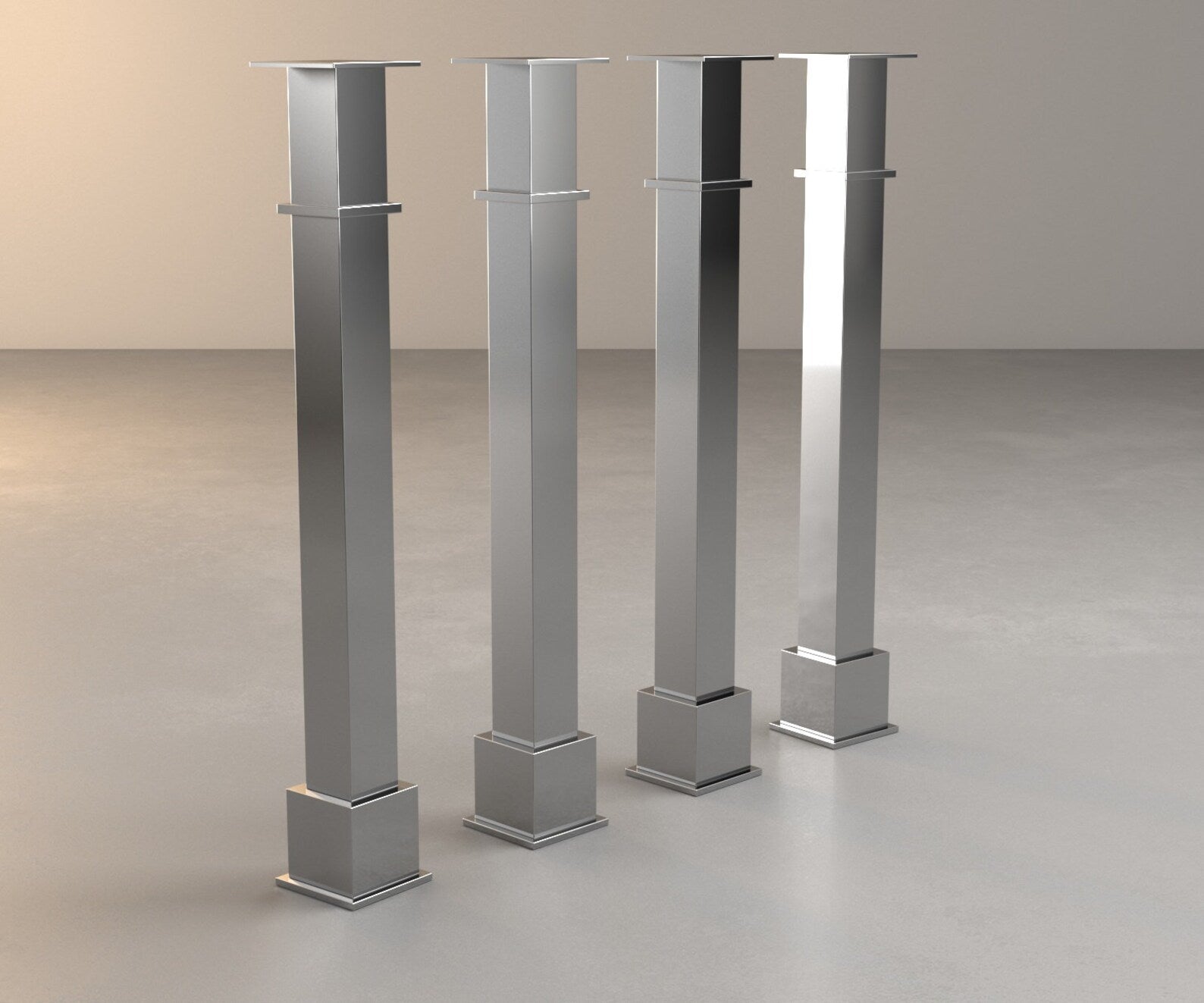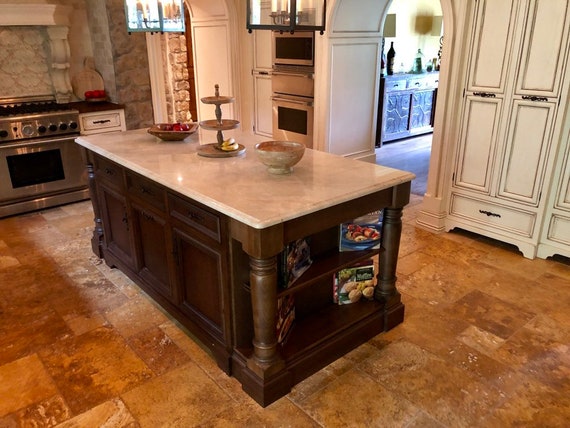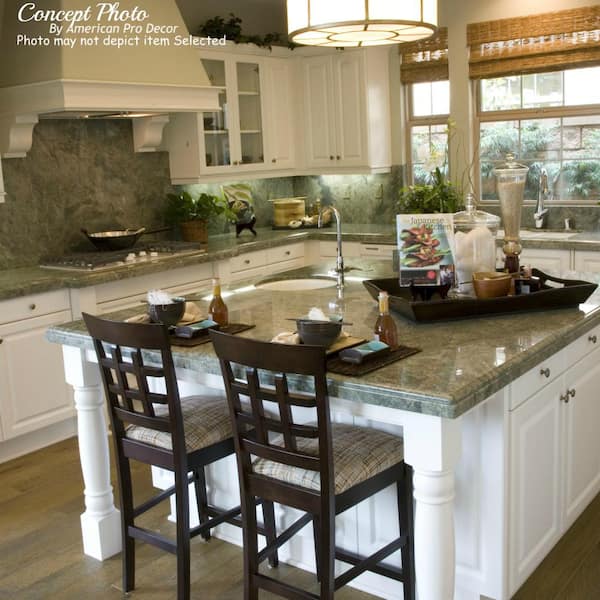The Very Best Kitchen Island Leg Options for Modern and Conventional Kitchens
Wiki Article
The Significance of a Sturdy Kitchen Area Island Leg in Developing a Useful Cooking Area
A tough kitchen island leg serves as a basic part in establishing a practical cooking setting, offering needed support for both the counter top and numerous kitchen area activities. As cooking areas develop into multifunctional areas for food preparation, dining, and mingling, the selection of materials and layout considerations for island legs comes to be significantly vital.Advantages of Sturdy Island Legs
Offering necessary support, durable kitchen island legs play a critical duty in boosting the capability and resilience of kitchen area islands - kitchen island leg. These legs not just bear the weight of the countertop and any type of extra items positioned on the island, but additionally add to the general security of the structure. A well-supported kitchen area island ensures that it remains functional and upright, even under hefty usage, which is especially vital in busy kitchen area atmospheresFurthermore, sturdy island legs can enhance the visual appeal of the kitchen area. They give a solid structure that can complement numerous layout styles, from contemporary to standard. This versatility allows homeowners to tailor their kitchen islands according to individual preference while ensuring that the architectural honesty stays uncompromised.
In addition to their supportive function, durable kitchen area island legs can also boost safety. A steady island decreases the risk of crashes triggered by tipping or wobbling, which is particularly vital in families with youngsters or senior individuals. In addition, strong legs can facilitate a smooth flow of tasks, enabling effective meal prep work and social interactions within the cooking area room. Inevitably, investing in strong kitchen island legs is important for a useful and aesthetically pleasing cooking location.
Materials for Kitchen Area Island Legs
When picking products for cooking area island legs, sturdiness and visual allure are vital aspects to consider,. One of the most typical products include hardwood, metal, and engineered timber, each offering distinct advantages.Wood, such as oak, maple, or cherry, is a classic option due to its toughness and ageless elegance (kitchen island leg). It can endure substantial weight and is resistant to wear, making it perfect for high-use kitchen settings. In addition, wood can be tarnished or repainted to match various kitchen styles
Metal legs, usually crafted from stainless-steel or wrought iron, offer a modern-day and commercial appearance. They are incredibly strong and can sustain significant loads while being immune to wetness and warm, which is beneficial in a cooking location. Steel legs can likewise be easily cleaned, improving their usefulness.

Layout Factors To Consider for Stability
The option of materials for cooking area island legs straight affects the design considerations for security. When creating a Check This Out cooking area island, it is extremely important to assess the weight-bearing capability of the selected products. Larger materials, such as solid wood or metal, commonly provide better security, particularly under the anxiety of everyday use.Furthermore, the leg design have to integrate proper geometry to improve security. A broader base increases the assistance location, reducing the threat of tipping or wobbling. Consideration needs to additionally be offered to the elevation of the legs; out of proportion leg sizes can result in discrepancy, endangering the overall stability of the island.
Moreover, the distribution of weight throughout the island is vital. Making sure that the leg positioning lines up with the heaviest elements, such as devices and countertops, will better boost stability.
Upkeep Tips for Durability

Depending on the material of the legs-- whether timber, steel, or composite-- ideal cleaning techniques ought to be employed. Metal legs might require a light polish to stop rust and keep their appeal.
If the cooking area island experiences heavy usage, take into consideration reinforcing the legs with additional braces or sustains to improve longevity. By following these maintenance tips, home owners can ensure their cooking area island legs stay durable and useful for years to come.
Picking the Right Leg Design
Routine upkeep makes sure that cooking area island browse around this site legs remain useful and tough, yet choosing the appropriate leg design is just as essential for both aesthetics and support. The selection of leg design can significantly influence the overall layout and harmony of your kitchen.
Performance is another critical element. Thicker legs or those with a sturdy base can sustain heavier kitchen counters and devices, enhancing the island's energy. On the other hand, slim legs might produce a ventilated look, ideal for lighter layouts however potentially much less encouraging.
Conclusion
In recap, the relevance of tough cooking area island legs can not be overemphasized in the production of a useful cooking location. These legs give necessary assistance, enhance security, and contribute to the general visual of the kitchen area.A sturdy kitchen island leg offers as a fundamental component in establishing a practical cooking setting, giving necessary assistance for both the kitchen counter and numerous kitchen area tasks.Giving vital assistance, durable kitchen island legs play a critical duty in boosting the capability and sturdiness of kitchen area islands. Inevitably, spending in strong kitchen area island legs is crucial for a practical and visually pleasing cooking location.
Factor to consider should also be given to the elevation of the legs; out of proportion leg lengths can lead to inequality, endangering the overall security of the island.
Wooden legs provide warmth and a classic appearance, while steel legs offer a commercial and modern-day feel.
Report this wiki page